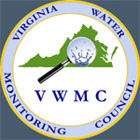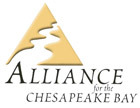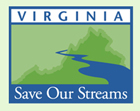Virginia Water Monitoring Day

Inquiry Based Approach
Water monitoring lends itself perfectly to the inquiry-based approach to teaching science. Students can ask questions about water quality, then prepare, investigate, collect data, and discuss (or share) their findings.
Before going out to the stream or other body of water, help the students develop a focus question that they can then work to answer. According to Virginia’s Water Resources: A Tool for Teachers:
“The essence of inquiry-based teaching is for students to develop answers to questions, using evidence and critical thinking to support their answers, and then to practice ways of communicating their answers and conclusions. Inquiry-based instruction can range from teacher-directed “structured inquiry,” in which the teacher provides a question and procedure for students; through “guided inquiry,” with the teacher providing the question but having students help develop the procedure to be followed; to student-directed “open inquiry,” in which students are free to raise and answer their own questions.”
To read more about the inquiry approach to teaching, see the introductory chapter of Virginia’s Water Resources: A Tool for Teachers (pages 7 – 11)
Reference:
Virginia's Water Resources—A Tool for Teachers. 2003. By Jeremy M. Lloyd, PhD and Kathleen Register. Published by Clean Virginia Waterways and Longwood University. Farmville, Virginia. http://www.longwood.edu/cleanva/images/Introductionpdf.pdf






